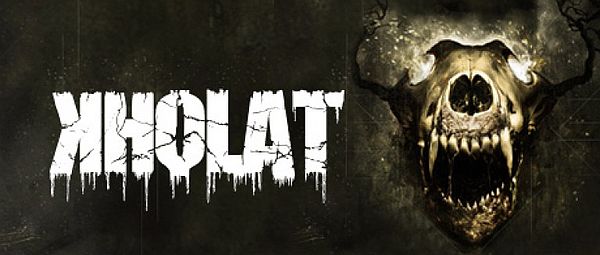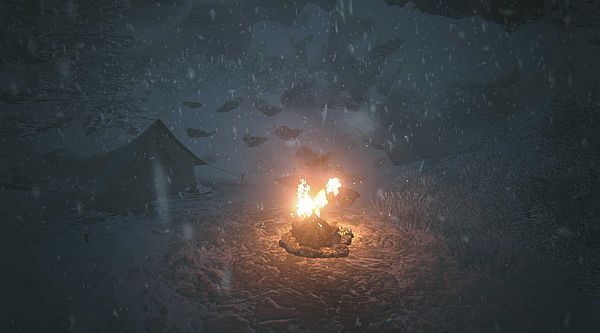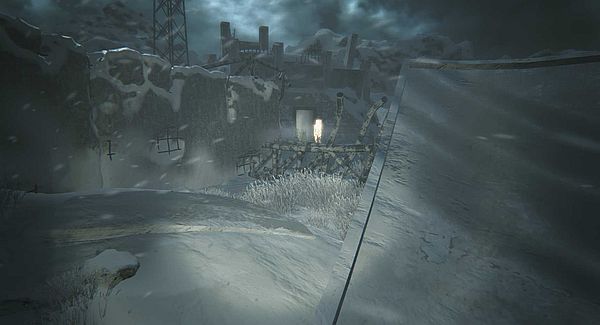
I don’t normally play horror games as it’s not really a genre I enjoy. But horror games from Russian and former Soviet bloc countries are a different story. There’s something about their style that shows they really understand fear. I cannot quite explain the draw, but I really like their ability to create an atmosphere where the surroundings and my mind are working equally hard to scare me. And when I heard that Kholat was from that part of the world, I knew I wanted to give it a try.
Platforms: PC (Windows, Mac)
Publisher: IMGN.PRO
Developer: IMGN.PRO
Genre: First-Person Survival Horror
Release Date: June 9, 2015
ESRB Rating: Not Rated
Kholat is a mountain in the Ural Mountain range in Russia where a group of students disappeared 56 years ago. Their bodies were eventually found, but the cause of death was indeterminate. Your character is there to see if you can uncover some answers to this mystery. You start in a small town, and as you navigate out of it, you realize that you have no GPS-style map. You will get lost in Kholat; that’s part of the plan. If you are really lucky and don’t hyperventilate from all of the screaming, then you might also find out what really happened on that mountain. This is the simple plan that leads to some frightening and expletive-inducing moments. You will die… and you will die a lot. That the narrator is acclaimed actor and celebrated dead man, Sean Bean, makes this all the more appropriate.
The first thing that struck me when I started playing Kholat was the music. The game opens with a woman singing in a minor key accompanied by light piano music, which then transitions to strings, then stinging horror strings, and then, finally, no sound at all. Each time there was a change, I thought I was in trouble, but the successive musical shifts were simply cuing my Pavlovian expectation of danger. Finally, everything was silent, like it might be in the wilderness of the game’s setting. I felt more isolated at that point than before. This was all in “Act I,” the game’s introduction section. The simple manner of the changes in music did a lot to immerse me in game.

The inclusion and exclusion of audio in Kholat happens regularly as you play, but in unpredictable patterns. Sometimes it is an ambient effect, and sometimes it is your doom. You never know. The developers took the irregular reward interval conceit and turned the reward into fear.
The visuals are not very crisp or as intricate as you would expect from a modern game. However, the developer deliberately placed the rough edges in the design to better serve Kholat’s world. There is a lot of lens flare, and light reflecting from surfaces causing changes in one’s focus. When you look around quickly with the mouse, everything blurs with that movement. When zooming in, the picture blurs slightly like the character is trying to focus. The snowflakes are little blurs that fly past you, and the snow frosted pine trees all shake in the wind in the same rigid, tessellating manner. The combined effect is almost like sped up Super 8 camera footage from the 60s or 70s.
Kholat successfully uses these effects on the player’s perspective to create a recognizable setting with details that slowly unnerve you. The effect for me was a slightly disjointed association with the world, almost like I didn’t belong. Another example of this is in the first section of the game, where the entire setting is fairly bright and full of color. By the end of it everything is darker and in grey scale. All of these effects and design choices do a great job of making the player feel isolated and out of place. When, or if, you get out of the snow, there are also crisper scenes in a higher resolution.

Playing Kholat is simple initially… move and look. Once you get to Act II you receive a map, flashlight, journal, and compass. These all function to help you move and give you more information as you go along. There’s just one catch, though: your compass and map are just like the real world ones. There is no auto location feature or “you are here.” I should mention I failed orienteering in Boy Scouts… twice. Realistic navigation, in frozen mountains, all while trying to figure out why people died? I was totally hosed.
There is one more thing you get as you start along the path of unraveling this mystery in the mountains: a voice. A haunting narrator cues in at various points. He might be an auditory hallucination or the omnipresent voice of the thing responsible for the killings in the area. You don’t really know. With all of the emphasis on audio and visual design to make you feel isolated, it turns out you might not be alone.
I wandered through the frozen mountains for a few real-world hours. I died a few times and had to clear all of the breakables from my desk. If you easily frighten and get lost, then this game can last quite a while. One of the nice inclusions for the player’s benefit are campsites. They act as save points and as a sort of fast-travel system. Once you find a campsite, you can travel back to it from any other camp. This definitely helped with my running, screaming, and dying.
I had a good time and a good scare with Kholat, especially because it faithfully sits within the vein of horror/suspense games to come out of the former Soviet region. I would say it is totally worth checking out and having a little fun with.

Review Disclosure: A review copy of Kholat was provided by IMGN.PRO for the purposes of this review.







